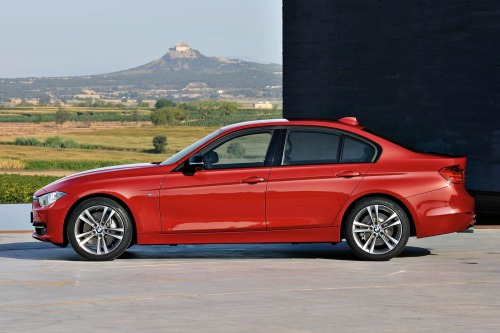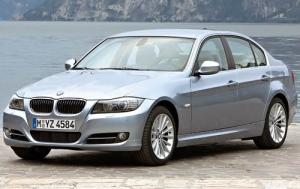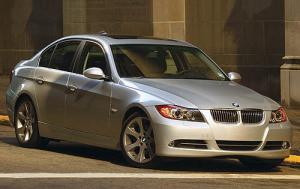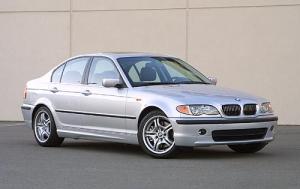While historically high new and used car prices have forced many buyers to look for "older" vehicles that have aged well as a way of saving money, the issues of reliability and dependability have become even more crucial.

How about older BMW 3-Series models? Have they proven to be reliable? And by older, I'm referring to models generally 10+ years old, so those from the fourth and fifth 3-Series generations, produced from as far back as 1999 through the 2013 model.
And generally, yes, they have proven to have above-average reliability. But that certainly doesn't mean all owners have found them to be trouble-free. Like any vehicle, including those renowned for their reliability, some models still run into mechanical problems.
Of course, build quality is critically important, and the 3-Series is certainly well-built. But there's more to it than that. How reliable a specific vehicle actually is can also vary greatly depending how well the vehicle has been maintained, its mileage, the driving habits of the owner, and the driving conditions its been subjected to. And then throw it a little luck as well.
It should also be noted that German-engineered cars are mechanically sophisticated and complex, and require regular maintenance and timely repairs, which are typically much more costly than non-luxury brands. So, that has to be factored into any buying decision as well.
All that said, history has proven that a properly cared for older 3-Series can last in the 200,000 - 250,000 mile range, while there are also reports of some doing 300,000 and even 400,000 miles.
Again, these are the "properly cared for" models. And these are the ones you need to identify before buying. This won't guarantee anything, but it will put the odds more in your favor.
See more on this in the Possible Mechanical Problems sections below.
So here, ...
- We'll do an overview of earlier BMW 3-Series generations, specifically the fourth and fifth, covering the 1999 - 2013 model years.
- Then we'll list possible mechanical issues that have been reported by some owners for each generation so they can be checked before buying one today.
- And then we'll summarize the overall pros and cons of an older 3-Series worth consideration for potential buyers today.
But first, two very important suggestions ...
1. Things To Do When Considering An "Older" 3-Series:
Locate Lower Mileage Vehicles: They are certainly out there to be found with careful and patient shopping. Be willing to drive a distance if you have to.
Vehicle History and Maintenance: Ask for the vehicle history report (CarFax or AutoCheck) as well as documented maintenance and repair records. If not provided by the dealer or private seller, it's best to move on.
Pre-Purchase Inspection: Have the vehicle independently inspected before making a final decision. This usually will cost in the $150-$200 range but is well worth it given the potentially thousands in savings over the long term.
2. Know How To Get The Lowest Used Car Price:
Get Dealers To Compete For your Business: When you are searching vehicles to possibly purchase, the following is the absolute best way to get the lowest price, and it is extremely easy and stress-free.
Just go to a national car listing site, (I happen to prefer CarsDirect.com for their massive dealer participation and ease of use, although others will get the job done as well) and find several listed vehicles that you may be interested in.
Then write something like the following in the "Check Availability" box or "Contact Dealer" box or whatever the site you are using uses.
"Hello, I've contacted several dealers about cars I am interested in and am looking for the best value. I am also a serious buyer planning to make a decision soon. Please send me your best out-the-door price. Thank you.
After receiving the offers, follow up by explaining that based on the price, you're leaning in another direction but still really like their car and would certainly consider another offer. When dealers drop out, you'll know you're at the best price.
Using the internet to get dealers to compete for your business is extremely important. More details on this and how to intereact with the dealers can be found here at Best Used Car Buying Techniques.
2006 - 2013 BMW 3-Series (Fifth Generation)

BMW redesigned its most popular vehicle for the 2006 model year with still more power and new styling, also adding a new premium compact sedan as well as a new wagon. BMW's iDrive control system was also added as an option.
This version, for both the sedan and wagon, was 1.4-inches longer in wheelbase, 2.2-inches longer in overall length, and 3-inches wider than its predecessor, and was produced through the 2013 model year.
Also univeral was an inline 3.0-liter six-cylinder engine, with all-wheel drive standard on wagons and available as an option on sedans. AWD models got the "xi" suffix designation.
BMW's 325i and 325xi models are equipped with 215 horsepower engines, as opposed to the 184 hp in the last generation's 2.5-liter six-cylinder. Wagons were available only as the 325xi.
The 3-Series 330i and 330xi models boosted power to 255 horsepower (an additional 30 over the earlier version). For all models, a six-speed manual transmission was standard, with an optional six-speed automatic.
Standard features on all the sedans included sunroof, traction control, antiskid control, front torso side airbags, both front and rear head-protecting tubular side airbags, a sunroof, a tire-pressure monitor, run-flat tires, and dual-zone automatic climate control, to name a few. They are all fairly loaded.
You May Also Like:
The Easiest Car Negotiation Technique
Best Used Cars For Reliability
All About Wholesale Car Prices
Steering-linked xenon headlights are standard on 330 models and optional on the 325s. The Sport Package option included a sport suspension and 17-inch tires (replacing 16-inch on 325s) or 18-inch tires on 330 models (replacing 17-inch).
Other available optional features found on some models include Active Steering (electronically varies steering ratio and assist), navigation, leather interior, heated front seats, rear obstacle detection, satellite radio, adaptive cruise control, and keyless ignition.
Coupes and convertibles, however, remained unchanged until a redesign for the 2007 model year.
Safety features were also ample. Standard safety equipment on the 2007 BMW 3-Series, for example, included antilock disc brakes, stability control, dynamic brake control, run-flat tires, front-seat side airbags, and full-length side curtain airbags. The 3-Series convertible is not equipped with the side curtains but has a rollover protection system.
2006 - 2013 BMW 3-Seies Possible Mechanical Problems

While generally considered reliable, as with all vehicles, some owners experienced mechanical issues which should therefore be included in an inspection before buying:
High-pressure fuel pump (HPFP) failures: Some early models equipped with turbocharged engines experienced issues with the high-pressure fuel pump, leading to rough idling, engine stalling, and, in some cases, complete engine failure. BMW issued recalls and extended warranties to address this issue.
Electric water pump failures: Some later models had problems with the electric water pump, which could fail prematurely, leading to overheating and potential engine damage.
Engine oil leaks: Some models experienced oil leaks, particularly from the valve cover gasket, oil filter housing gasket, and oil pan gasket.
Turbocharger issues: Models equipped with turbocharged engines were prone to issues such as wastegate rattle, turbocharger failure, and boost pressure problems.
Suspension and steering components: Some owners reported issues with suspension components such as control arms, bushings, and ball joints wearing out prematurely, leading to noise, vibration, and handling issues. Steering-related problems, including steering rack leaks and steering angle sensor failures, were also reported.
Transmission Issues: Some automatic transmission models experienced problems with rough shifting or fluid leaks, while some manual transmission models had issues with worn synchros and premature clutch wear.
Electrical issues: Various electrical problems were reported, including malfunctioning sensors, faulty electronic modules, and issues with the vehicle's entertainment and navigation systems.
Brake-related problems: Some owners reported premature wear of brake components, including brake pads, rotors, and calipers. Some also experienced issues with the electronic stability control (ESC) system, ABS sensors, and brake fluid leaks.
It's important to note that not all BMW 3-Series models experienced these problems, and the severity of issues could vary depending on factors such as driving habits and maintenance history.
1999 - 2005 BMW 3-Series (Fourth Generation)

This 3-Series was roomier and added new features as compared to its predecessor. Four-door sedans also debuted in 1999 as the 323i and 328i.
The 323i was equipped with a 2.5-liter engine while the 328i retained its 2.8-liter. A manual shift transmission was standard, with an optional five-speed automatic which incorporated a Steptronic manual-shift provision for these model years.
Continuing to upgrade its performance and refinement, this generation was available as a sedan, coupe, convertible, and for the first time in the U.S., as a wagon.
Standard features for these models included traction control, Cornering Brake Control, and six airbags for the front passenger. Rear side-impact airbags were a new option, as was Park Distance Control (beeped to signal an approaching object when in reverse).
Also for the first time in the U.S., only six-cylinder engines were available. All-wheel drive returned as an option for some models, as well as satellite navigation, head and side airbags, and a six-speed transmission.
More Car Buying Tips:
Best Time To Buy And How To Negotiate
Car Buyers Being Forced Into Older Vehicles
The Best Used Cars For Gas Mileage
Use Residual Value To Your Advantage
The even more athletic M3 returned in 2001 in coupe or convertible form with 333 horsepower straight-six engine and offered with either a manual transmission or a new automated manual option.
Also in 2001, all models were given revised designations. The former 323i sedan, 323Ci coupe/convertible and 323i sport wagon were now called 325i/325Ci, due to their new 2.5-liter six-cylinder engines, which also added 14 additional horsepower.
The 328i sedans and 328Ci coupes/convertibles became the 330 series due to a 3.0-liter six-cylinder that produced 32 additional horses. In addition, all 330 models had 17-inch tires.
1999 - 2005 BMW 3-Series Possible Mechanical Problems
This generation, again while generally considered fairly reliable, has had more frequent incidents of mechanical issues reported by owners, which should therefore be included in a pre-purchase inspection:
Subframe cracking: One of the more common issues has been is subframe cracking, particularly in rear-wheel-drive models. This could lead to poor handling, noise from the rear suspension, and, in severe cases, structural failure. Reinforcement kits or welding repairs are often required to address this problem.
Cooling system failures: Also more common have been cooling system issues, including failures of the plastic thermostat housing and radiator necks. These failures could result in coolant leaks, overheating, and potential engine damage if not addressed promptly.
Oil leaks: Like many BMW models, this 3-Series was prone to oil leaks from various sources, including the valve cover gasket, oil filter housing gasket, and rear main seal.
Electrical gremlins: Various electrical problems were reported, including issues with the central locking system, power windows, instrument cluster, and lighting. These issues could be intermittent and challenging to diagnose, requiring troubleshooting by experienced technicians.
Suspension and steering components: Owners reported issues with worn suspension components such as control arms, ball joints, and bushings, leading to noise, vibration, and handling issues. Steering-related problems, including steering rack leaks and worn tie rod ends, were also more common.
Transmission problems: Some automatic transmission models experienced problems such as erratic shifting, slipping, and fluid leaks. Manual transmission models were known to have issues with worn synchros, leading to difficulty shifting gears, grinding noises, and premature clutch wear.
Engine-related issues: Some models experienced issues such as VANOS (variable valve timing) system failures, valve cover gasket leaks, and CCV (crankcase ventilation) system failures. These issues could result in poor engine performance and increased emissions.
Brake-related problems: Some owners reported premature wear of brake components, including brake pads, rotors, and calipers. Some models also experienced issues with the ABS system, brake sensors, and brake fluid leaks.
Sunroof Issues: Some of these 3-Series models suffer from finicky sunroofs.
Window Regulators: Window regulators (the components inside the doors that move the windows) were reported by some owners to be problematic.
Engine Ignition Coilpack Failures: BMW issued a recall for this issue.
Corrosion on Alloy Wheels: Keep an eye out for possible wheel corrosion.
Overall
No matter the model or the generation, the 3-Series sports a world-class suspension with steering and braking capabilities that provide total confidence (and lots of fun) whether cruising the highway or maneuvering challenging twisty back roads. And careful shopping will reveal relatively lower mileage vehicles still exist.
Pros And Cons Of An Older BMW 3-Series
Older BMW 3-Series Pros
Lower Purchase Price: Older BMW models generally have lower purchase prices compared to newer used cars, offering potentially significant savings in upfront costs.
Value for Money: Despite being older, E90 BMWs still offer a blend of performance, luxury, and driving dynamics that many enthusiasts appreciate. You can get a premium driving experience at a more affordable price point.
Classic Design: The 3-Series has a timeless design that still looks modern and stylish today. Many people are drawn to its sleek lines and elegant interior, making it a desirable choice for those who appreciate classic automotive design.
Lower Depreciation: Since older cars have already experienced most of their depreciation, a buyer is less likely to lose a significant amount of money due to depreciation compared to buying a newer car.
Potential for Lower Insurance Costs: Generally, insurance costs for older cars are lower than for newer models. This can help offset some of the other ownership costs.
Dynamic Handling: Older 3-Series models are praised for their excellent handling characteristics, offering precise steering and a balanced chassis. They provide an engaging driving experience, especially for enthusiasts who appreciate sporty driving dynamics.
Powerful Engines: BMW offered a range of engines for these models, including fuel-efficient four-cylinder engines and more powerful inline-six engines. These engines provide a good balance of performance and efficiency.
Luxurious Interior: The interior of these models feature high-quality materials and a well-designed cabin. It provides a comfortable and upscale environment for both the driver and passengers.
Technology: The fifth generation 3-Series introduced various technological advancements for its time, including available features such as the iDrive infotainment system, adaptive headlights, and active steering.
Older BMW 3-Series Cons
Higher Maintenance and Repair Costs: While a buyer may save money on the purchase price, older BMWs often require more frequent maintenance and repairs compared to newer models. Parts and labor costs for BMWs are also typically higher than for non-luxury brands.
Outdated Technology: Compared to newer cars, the technology and features in these older BMWs may feel outdated. A buyer may miss modern conveniences such as advanced infotainment systems, driver assistance features, and smartphone integration.
Fuel Efficiency: Older 3-Series models, especially those equipped with larger engines, may not be as fuel-efficient as newer models. This could result in higher fuel costs, especially if a buyer has a long commute or does a lot of driving.
Safety Features: While these models come with standard safety features, they may not be as advanced as those found in newer cars.
Ride Quality: The ride quality can feel harsh to some drivers, especially on models with sport suspension or larger wheels. This firm ride might not be suitable for drivers seeking a more comfortable and compliant driving experience, particularly on rough roads.
Interior Space: Compared to some competitors, these models have more limited rear-seat legroom and trunk space. Taller passengers might find the rear seats cramped, and the trunk space might be insufficient for larger cargo items.
Complexity of Controls: While the iDrive system introduced advanced features, it also garnered criticism for its complexity and steep learning curve. Some drivers found the controls unintuitive and distracting to use while driving.
 By Josh Rosenberg
By Josh Rosenberg